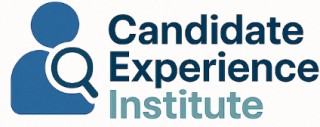
Defining a Backfill Position
Clarifying the Backfill Concept
Understanding what a backfill position entails is crucial for employees and companies alike. Essentially, a backfill position arises when an employee leaves their role—voluntarily or otherwise—and the company seeks to fill that vacant position. This situation often leads to urgent hiring and can affect the team dynamics temporarily, especially if the employee played a significant role in the organization. However, backfilling isn’t just about filling the void left by departed staff. It’s also about maintaining the continuity of work and ensuring that the departure doesn't impact the ongoing projects or the workflow of the remaining team members. The process requires a strategic approach to hiring, bearing in mind both the short-term need for continuity and long-term organizational goals. Additionally, when a company recognizes the need to backfill, it is important for management to communicate clearly with the current team. Support for the remaining employees is vital as they might need to adjust their workloads during the transition. Companies may employ strategies such as succession planning and cross-training to prepare for these scenarios, positioning themselves to execute a backfill process smoothly. During the hiring process, employers should focus on crafting a clear job description that captures not just the necessary skills but also the cultural attributes desired. This approach will aid in attracting top talent and ensuring a seamless fit within the team. For further discussion on effective management practices during this transitional period, you can explore more about navigating the transition effectively in organizational dynamics.The Impact on Candidate Experience
Influence on Candidate Perception
When it comes to the candidate experience, a backfill position can significantly shape a potential employee's perception of a company. The way an organization manages the backfilling process often reflects its values and operational efficiency. Candidates are likely to gauge the company’s culture based on how it communicates about the vacant position and the steps it takes to fill it. Transparency and clarity in job descriptions are key to ensuring that candidates feel valued and informed throughout the recruitment process.
Streamlining the Recruitment Process
For candidates, a smooth and efficient recruitment process is crucial. A well-managed backfill strategy can make a difference in how candidates view the organization. By adopting best practices in employer branding and communication, companies can enhance their reputation and attract top talent. This involves clear communication about the role, expectations, and the timeline for the hiring process.
Impact on Current Employees
Backfilling positions not only affects potential candidates but also impacts current employees. Team members who are informed and engaged in the backfill process are more likely to support the transition and help integrate new hires effectively. This requires management to leverage tools like management software and cross-training programs to maintain team morale and productivity during the transition.
Long-term Considerations
In the long term, a well-executed backfill process contributes to a positive work environment and supports succession planning. By focusing on both short-term and long-term goals, organizations can ensure that they are not only filling a vacant position but also strengthening their team for future challenges. This strategic approach to backfilling positions ultimately enhances the overall candidate experience and supports the company’s growth objectives.
Challenges Faced by Employers
Addressing Employer Concerns in Filling Vacancies
The backfilling process often presents several challenges to employers that can significantly affect the organization. Understanding these hurdles is essential to refining the recruitment process and ensuring a seamless integration of new team members into the existing structure. Employers frequently contend with a time-sensitive element in backfilling. The demand to fill a vacant position swiftly can pressure hiring teams, potentially impacting the quality of candidates considered. Additionally, balancing the immediate need for an employee with long-term company goals requires precise succession planning and strategic thinking. Another common challenge is maintaining team morale and performance. Having to temporarily redistribute responsibilities among current employees may lead to burnout or decreased work satisfaction. This is why cross-training can be beneficial, as it equips employees with the skills required to handle additional tasks temporarily. Organizations also face difficulties when clearly defining the role of a backfill position. Ensuring that job descriptions are updated and accurately reflect the responsibilities and expectations is crucial to attracting the best available talent. Finally, integrating new software solutions, such as management software, can streamline the backfill strategy and enhance the overall recruitment process. However, selecting and implementing the right tools require careful consideration, ensuring they align with the company's current systems and enhance productivity. For those looking to better navigate these challenges, tapping into expert insights, perhaps through top HR podcasts, can be an invaluable resource in understanding best practices and innovative solutions in handling backfill processes effectively.Strategies for Successful Backfill Hiring
Effective Approaches for Seamless Backfill Hiring
Backfilling a position requires more than merely finding a candidate to fill the role. Employers need strategies in place to ensure the transition is smooth and the organization's long-term goals are met. Here's a closer look at some of the best practices for successful backfill hiring:- Precise Job Descriptions: Crafting comprehensive and accurate job descriptions is essential. This clarity helps both current employees and potential candidates understand what the role entails and what skills are needed.
- Incorporate Succession Planning: By integrating succession planning into the process, organizations can identify internal talent ready for promotion, thus potentially reducing the time to backfill positions.
- Enhance Cross-Training: Encourage cross-training among team members. By cultivating a pool of skilled employees, the organization can promote internally and fill temporary gaps quicker without disrupting workflows.
- Utilize Management Software: Leveraging management software can streamline the entire backfill process, from tracking recruitment metrics to initiating communication with potential candidates.
- Establish a Backfill Strategy: Organizations should devise a robust backfill strategy that outlines the steps in replacing an employee. This includes identifying critical roles and planning for unexpected vacancies.
The Role of Communication
Effective Communication in Backfill Hiring
In the backfill hiring process, communication plays a pivotal role in ensuring a seamless experience for both candidates and the organization. It is essential to maintain transparency and clarity throughout the recruitment process to prevent misunderstandings and foster a positive environment. For employers, clear communication begins with defining the job description comprehensively. By articulating the requirements and responsibilities associated with the backfill position, hiring teams can attract top talent who are well-suited for the role. This includes specifying whether the position backfill is a short-term or long-term requirement, which helps potential candidates understand what is expected of them. Current employees also benefit from seamless communication, especially those directly involved in the transition. Ensuring that team members are aware of the changes, timelines, and expectations can facilitate smoother integration of the new hire. Additionally, employing backfill strategies like cross training and succession planning can help sustain productivity during the backfilling process. Employers must also make efforts to communicate the advantages of the backfilling role to potential candidates. Highlighting the benefits—such as opportunities for growth and the organization's commitment to employee development—can make the position more appealing to candidates. Furthermore, leveraging management software to track and streamline communication channels can aid in reducing potential delays and fostering an efficient recruitment process. By prioritizing effective communication, companies can ensure a more positive candidate experience, thereby enhancing their reputation and ability to attract the best employees.Future Trends in Backfill Hiring
Anticipating Future Developments
Looking into the future of backfill positions, several trends are emerging that could transform the hiring landscape. As organizations continue to evolve, the backfill process may see significant changes, driven by shifts in technology, workforce dynamics, and strategic approaches.- Integration of Technology: Companies are increasingly turning to digital solutions to streamline the backfilling process. Management software tailored for recruitment can expedite the hiring steps, ensuring the vacant position is filled promptly with qualified talent. This tech-driven approach not only saves time but also enhances accuracy in identifying the best job fit.
- Focus on Succession Planning and Cross Training: To minimize disruptions, organizations are placing more emphasis on succession planning. By preparing current employees for upward mobility, companies ensure a smoother transition when an employee leaves or moves up. Cross training team members across various roles also adds flexibility, allowing for quick adjustment within the team when unexpected vacancies arise.
- Emphasis on Employee Experience: Recognizing the impact on the candidate experience, employers are adopting strategies that prioritize clear communication and support throughout the process. As highlighted previously, effective communication is crucial in maintaining engagement and reducing uncertainties faced by candidates.
- Strategic Backfill Planning: Companies are increasingly aligning their backfill strategies with long-term organizational goals. This involves proactive talent management, ensuring that potential candidates are identified and nurtured well in advance of a vacancy.
- Adaptability to Workforce Changes: The dynamics of the workforce are continually changing, with more emphasis on remote work and flexible roles. Organizations are adapting their backfill strategies to accommodate these shifts, ensuring they remain competitive in attracting top talent.













